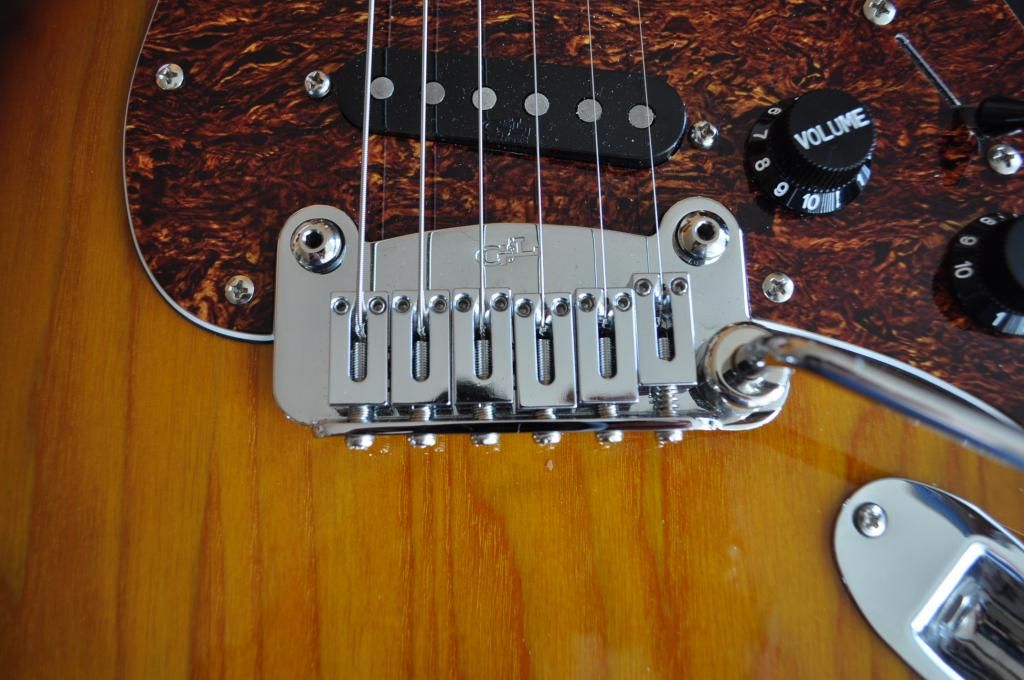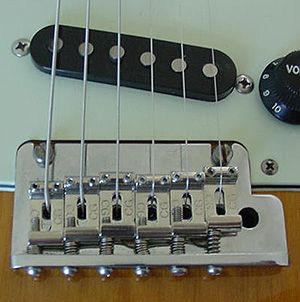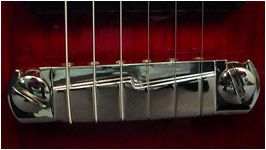I heard a while back that theoretically, a properly intonated guitar would have the saddles arranged in two "step" patterns. This is where the high E would be closer to the headstock than the B and G, with the B closer to the head stock than the G. This pattern then repeats on the D, A, and low E. This made sense to me based on the concept that if the nut was cut properly, and the bridge was even or parallel to the angle of the nut, then the distance from nut to bridge should be equal at any point across the bridge. The "step" pattern would result from the different gauges of the strings requiring more or less distance. A possible exception to this would be where a bridge would be angled to compensate however I think that would just minimize the size of the "steps".
Please refer to the 2nd, 3rd and 4th pictures for bridges with saddles in the "step" pattern and the PRS stop tail compensated bridge.
Now in the real world, I'm not sure if this applies at all times. More specifically, the reason for my question is I had my guitar setup recently and my bridge came back as seen in the first picture. I checked intonation using a Peterson strobe tuner and on the Line 6 moble IPad modeling software and at least 4 strings are out checking open string against fretted 12th and open against 12th fret harmonic. I received the guitar back the first time and returned it because I wasn't satisfied the setup was correct, then received it close to the same way. When I looked at the saddle positions I was immediately suspect because I believe the "step" pattern theory is generally valid and when the saddles aren't close to following that, something is likely incorrect. Of course the shop says everything is spot-on but that's not what I'm seeing with my tuners. They use the small electronic tuners and I had mentioned the "step" pattern when I brought it back. It appears they tried to get it with the G, B, and high E, although the high E is doesn't register as intonated correctly.
Thanks for any advice.




Is my belief in the "step" pattern wrong? Is it possible that a bridge with saddles arranged like seen in the picture could be intonated properly given the nut was cut properly? Am I checking my intonation incorrectly?